Italy is a long strip of land in the Mediterranean Sea with 7,500 km of beautiful coastline dotted with 537 charming tourist ports. For those who love to sail, Italian tourist ports are a perfect way to enjoy both the natural beauty of the peninsula and the artistic ones. With 160,000 berths and state-of-the-art facilities in its various marinas, Italy is a perfect destination for those who decide to sail the Mediterranean.
We have selected for you the 10 best marinas and tourist ports in Italy. There are some of the most interesting ports both for their prices and for the beauty of their infrastructure and proximity to places of interest. Get on board and be ready to set sail with us: our journey through the Italian tourist ports begins now!

10 tourist ports in Italy: a journey into the heart of the Italian Mediterranean
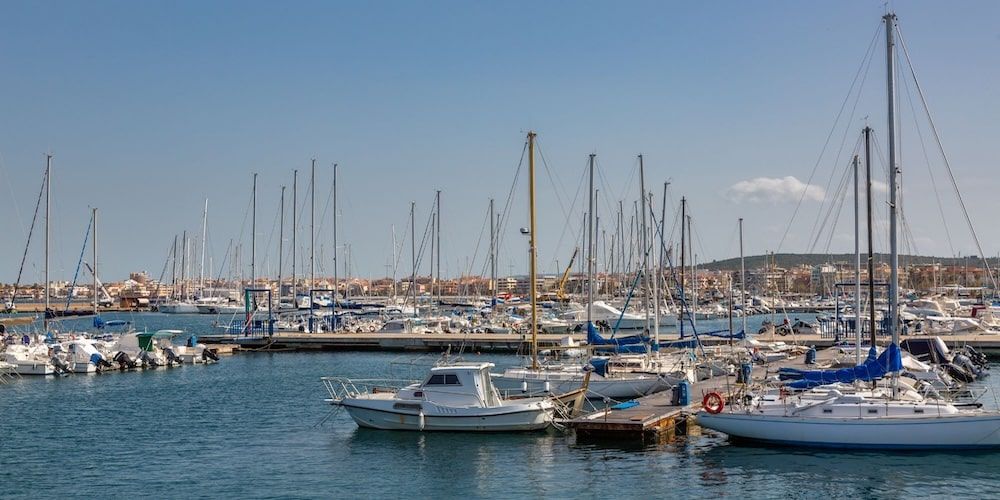
Sailing through Italy means following a unique route that connects landscapes, cultures and identities. Tourist ports become landing and departure points, places where stories, routes and Mediterranean inspirations intersect. Each port preserves its own character, shaped by the surrounding territory and by the millennia-old bond between coastal communities and their sea.
From North to South, Italian marinas reveal a mosaic of atmospheres: the understated elegance of the northern rivieras, the bright horizons of the islands, and the historic villages overlooking calm, tranquil waters, where ancient maritime traditions blend seamlessly with the most modern and efficient services.
Each port becomes a lens through which to read the evolution of our Mediterranean, and describing the 10 best tourist ports in Italy means portraying places where the sea is not merely a backdrop but a living part of the territory — revealing the full charm of our country through a journey into one of its most authentic souls.
- Port of Alghero;
- Ports of Syracuse;
- Ports of Crotone;
- Port of Favignana;
- Marina of Nettuno;
- Old Port of Naples;
- Porto Sant’Ercole;
- Portovenere;
- Portosole of Sanremo;
- Old Port of Trieste.
10. Tourist ports in Italy: North Sardinia, port of Alghero
🥇 Visit Italy’s brand partnership
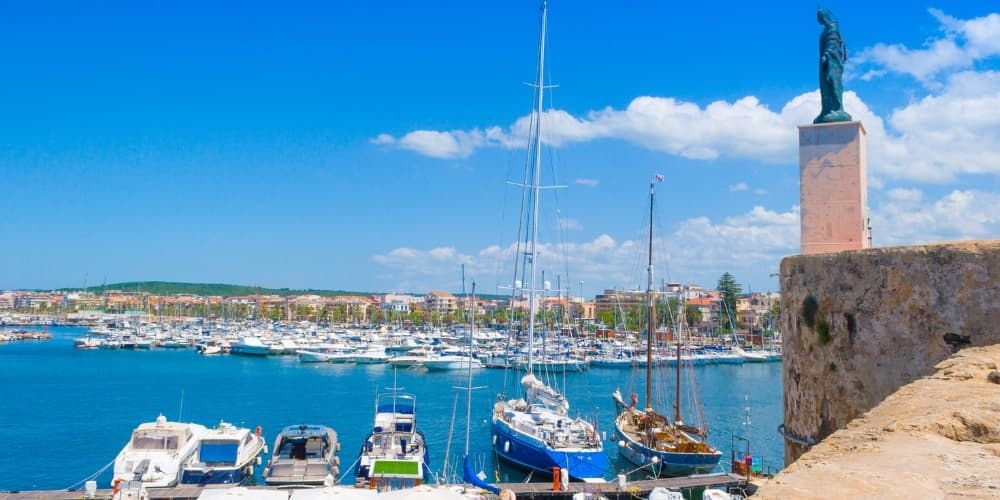
Overlooking the North-Western coast of Sardinia, just below the bastions of the ancient city, there is one of the most fascinating tourist ports in Italy: the port of Alghero. The port of the city of red coral, for centuries a true crossroads of Mediterranean trade, was first fortified by the Doria family and then, in 1354, conquered by the Aragonese, who turned it into a central outpost along the maritime routes. From that layering of powers and cultures, a unique city took shape, where Sardinian traditions and Catalan influences have created a truly one-of-a-kind identity.
Today the port of Alghero is among the best Italian tourist ports, a magical and perfect place to land discovering one of the splendid cities of Northern Sardinia in the iconic setting of one of the most beautiful seaside cities in Italy. Here you will find also Marina di Sant'Elmo, a port that can accommodate up to 100 boats and superyachts of up to 70 metres, where privacy, discretion and security are the keywords of 5-star service.
The port of Alghero enjoys an ideal position for exploring Northern Sardinia: from the Coral Riviera to the Nuragic sites of Palmavera and Sant’Imbenia, all the way to the famous Neptune’s Grotto and the breathtaking views of Capo Caccia. Venturing inland, you’ll find the pre-Nuragic necropolis of Anghelu Ruju—where you can taste wine crafted using ancient methods that have made this site renowned worldwide—and the Domus de Janas S'Incantu, with its visually striking hypogean tombs.
In this itinerary, which blends coastline and archaeology, Alghero also reveals a vibrant cultural soul: every year the city hosts JazzAlguer, one of the hallmark events of the Salude & Trigu project, bringing music, tradition, and unique atmospheres to some of the most evocative locations in Northern Sardinia.
Discover more about the events of Salude & Trigu
Hand the floor over to: Rita D'Appello, Associazione Bayou Club Events
“What makes the Port of Alghero unique, internationally and in every season, as an icon of culture, tourism and events in the city and throughout North Sardinia?”
A: "The Port of Alghero is one of the largest tourist ports in the Mediterranean with over 2500 berths. Its peculiarity is that of creating a unique view of the historic centre, being able to moor at the foot of the ancient city walls. Its birth it dates back to the 12th century with the Doria family, but it is from the Catalan-Aragonese domination that the ancient city and its port retain the strongest influences: in the architecture, in the churches, in the bastions and in the language which is still spoken after centuries. From the Port there's an access through the sea gate, the ancient entrance to the fortress city directly on Piazza Civica, being able to immerse in the streets and alleys of the historic centre, where in all seasons of the year you can visit the museums, boutiques and especially craft shops dedicated to red coral, the undisputed symbol of the city. One last curiosity: for a few years now, in June the Dogana dock has become the international catwalk for the WRC Rally, where the dive of the winning drivers has become one of the symbols of the Sardinian stage of the world championship."
9. Ports of Syracuse
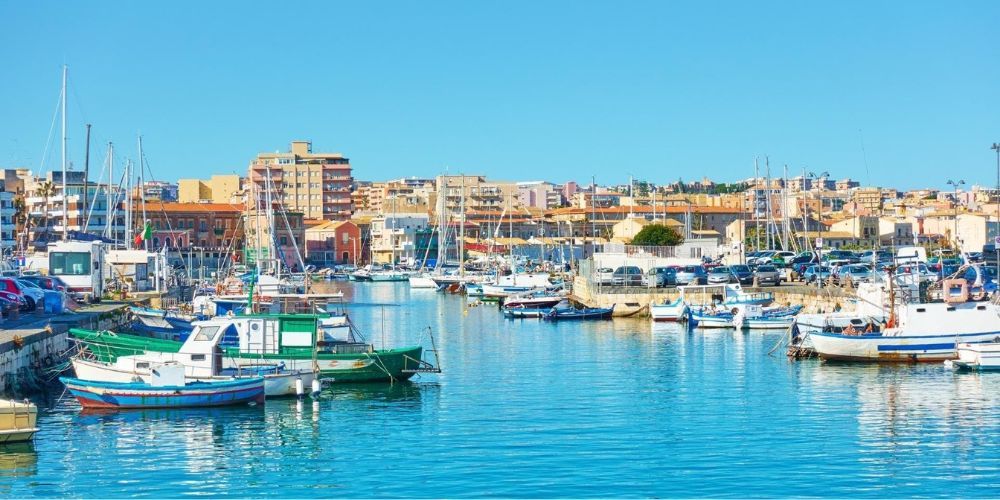
And here we are in Sicily. Among all the magnificent ports of the island, today we want to talk about those of Syracuse. This is a port on the Ionian coast of Sicily made up of three distinct units: the Grand Port and the Marmoreal Port on the island of Ortigia and Porto Rifugio, located in the Northern part of the city and used for petrochemical activities.
From the visitors point of view, the two tourist ports of Ortigia are undoubtedly the most fascinating: gateways to one of UNESCO's world heritage sites, the ports of Ortigia are the most attractive for tourists as they're located right at the centre of the Mediterranean, so there is no need to dwell on the strategic value that its port has had over the centuries.
To date, the tourist ports of Syracuse were opened to cruise ships at the beginning of the new millennium: since then, various economic interventions have followed to improve the entire marina area. The two harbours also host numerous pleasure and sailing ships. Several famous regattas, such as the international Syracuse-Malta regatta, the Rotta del Vino (Marzamemi-Siracusa-Riposto) and the Odyssail regatta on the Ulysses route, which starts in Sardinia, crosses the Mediterranean touching Syracuse and ending in Athens, also depart from here.
Visit the majestic Castello Maniace in Syracuse8. Ports of Crotone
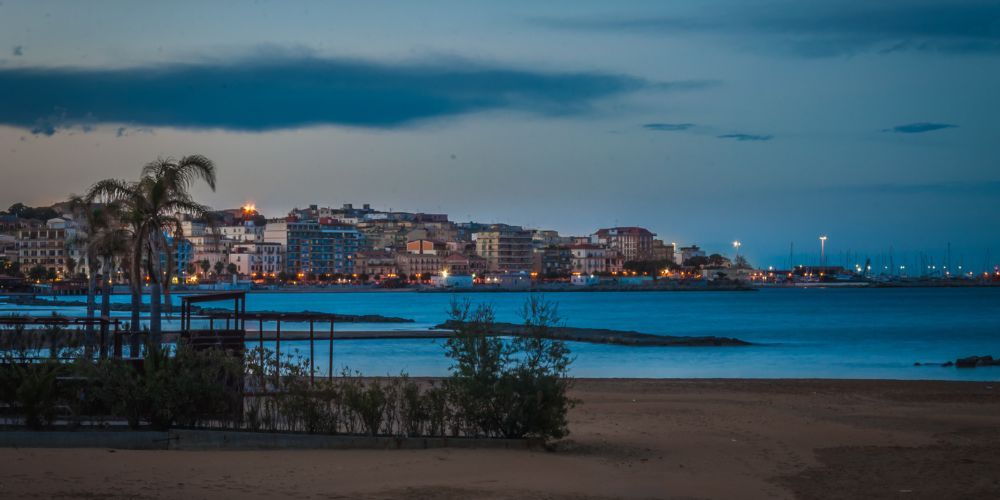
Our journey discovering Italian tourist ports goes on as we land in Calabria. Destination? Crotone, with its two tourist ports: the Old Port (Vecchio) and the New Port (Nuovo). The Old Port in the South is mainly used by fishing boats, berths and ships in transit. Here you can find technical assistance and the seabed is up to 5 metres deep, the crosswinds are sirocco and libeccio.
In the Northern area lies the New Port, characterised by large expanses of water and long quays equipped for tourist purposes. Here you will find pleasure boats, yachts, moorings, refuelling and storage stations. At Porto Nuovo, there is also loading and unloading of goods, while the seabed in the area of the Forche beach is up to 9 metres deep. Here the crosswinds are the tramontane and the mistral.
The tourist ports of Crotone were founded as early as the 7th century and belonged to Magna Graecia. For centuries Crotone was an important port of call in the Mediterranean, but the real boom came in the early decades of the 20th century when Calabria was industrialised.
7. Port of Favignana
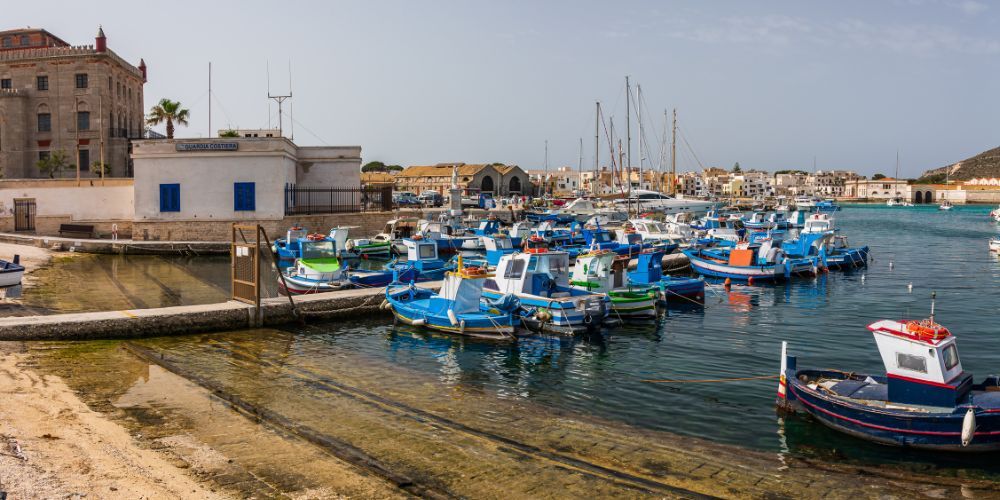
This is the only port located on the island of the same name, the largest of the Egadi Islands. It is located in the inlet called Cala Principale, a strip of land between Punta del Faraglione and Punta di S. Nicola. The pier extends almost 90 metres southwards from the main wharf and plunges into the cove. In the southern part, a well-protected dock houses quays and yards for tourist use.
At the tourist port of Favignana, you can see many different types of boats: pleasure boats, fishing boats, tuna boats, ferries and hydrofoils. Numerous nautical services can be found in the town.
6. Marina of Nettuno
Just over an hour's drive from Rome is the beautiful marina of Nettuno, a place suspended between the past and the future. Embellished by the nearby ancient village, the marina's technical efficiency and natural beauty make it a top ten choice.
The marina of Nettuno was inaugurated in 1986 and just a few years of life has managed to take its place among the best tourist ports in Italy in the opinion not only of locals but also of international customers. Since the first year of its establishment, the port of Nettuno has been awarded the Blue Flag every year by the Foundation for Environmental.
Major sailing regattas are held in its Gulf every year. It is also perfect for pleasure boating thanks to its 3 km of quays, 14 piers, 800 berths and the constant assistance of the control tower for manoeuvres in and out of the port.
Find out the beauty of the Italian Capital with Visit Rome Pass5. Old Port of Naples
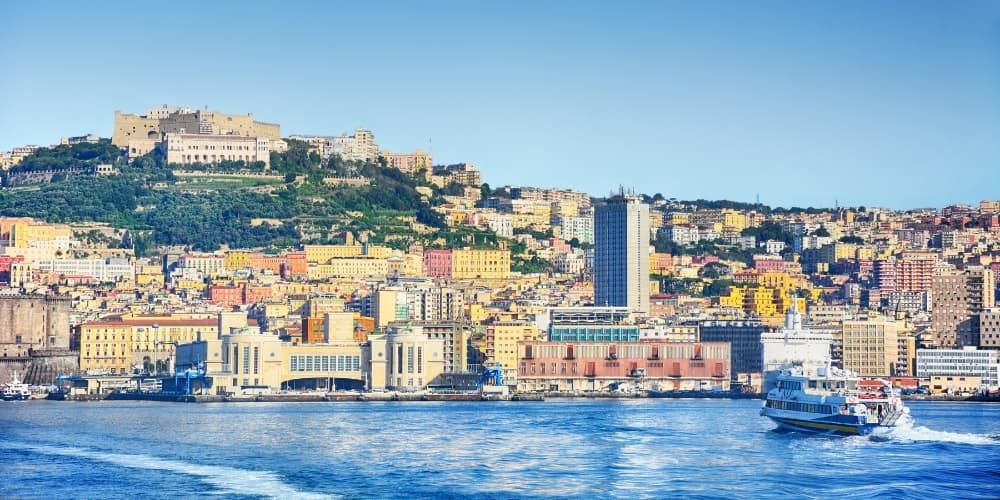
The Old Port of Naples is a true gateway to one of Italy's most beautiful cities, a crossroads of people and goods, and a reference point for the entire region. Its foundation dates back to the 8th century by the Greeks: later, with the advent of the Angevins, it was enlarged along with the city.
The Angevin wharf was built at the behest of Charles II at the beginning of the 14th century; in 1487 Ferrante of Aragon had the lighthouse called the 'Lanterna del Molo' built. Finally, under the Bourbons, the Port of Naples became one of the best equipped in Europe, hosting Venetian, Danish, English, Genoese and Turkish military and merchant fleets.
Later, the Old Port of Naples became a great naval arsenal, which gave birth to legendary ships such as the Real Ferdinando I, the first steamship in the Mediterranean. Today, the Port of Naples is a preferred access point to the Neapolitan city as a dock for cruise ships as well as a merchant port. The city centre is within walking distance
Find out the city in the shadow of Vesuvius with Naples Pass4. Porto Sant'Ercole
Porto Sant’Ercole, located in the heart of the Tuscan Maremma, has an ancient history: founded in Etruscan times and transformed into a port by the Romans, it still preserves the Byzantine-era Bastion of Santa Barbara, while the fortress dates back to the late 13th century.
Porto Ercole’s true flourishing came in the 15th century under the Republic of Siena, which turned it into a key point along the Argentario coast. It was also the site of important battles: the Capture of Porto Ercole was immortalized by Vasari in the Hall of the Five Hundred at Palazzo Vecchio in Florence. Following the Peace of Chateau-Cambrésis, the town came under Spanish rule, entering a new period of prosperity. In 1610, Michelangelo Merisi da Caravaggio died here.
In the 18th century, the town entered a slow decline, but in the post-Napoleonic era Porto Ercole regained prestige as one of Italy’s most charming tourist ports, also thanks to the fame brought by Juliana, Queen of the Netherlands, who spent her holidays here. Following in her footsteps, you can visit the four forts, the churches of Sant’Erasmo and San Rocco, and the historic village. If you are traveling by boat, just a short distance away you’ll find Cala Galera, famous for the mooring of yachts and VIP vessels.
3. Portovenere
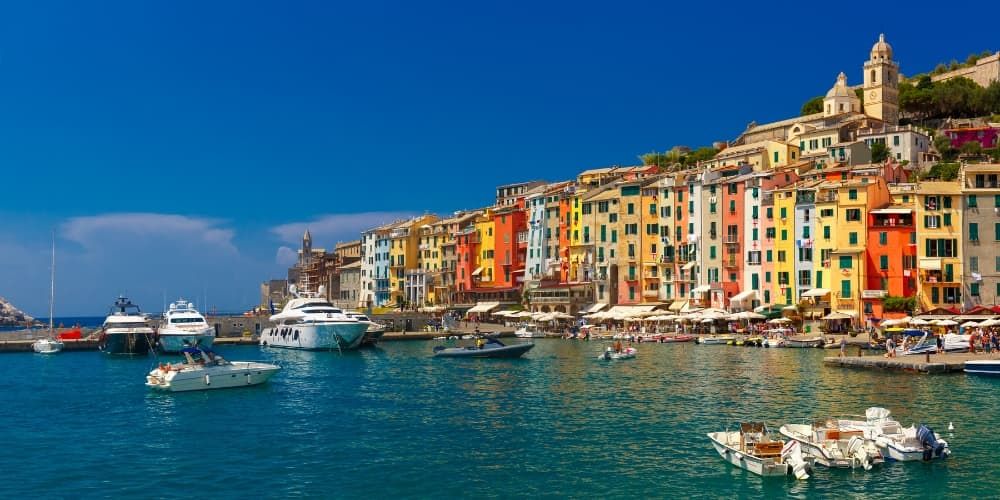
Portovenere is an ancient village at the western end of the Ligurian Gulf, one of the most idyllic villages on the coast. Looking at the houses in Portovenere you can still identify the typical architecture of the colonies of the Maritime Republic of Genoa, which wanted the houses both as places to live and as defensive structures in case of attack from the sea.
In Portovenere, in addition to the beautiful tourist port, you can also visit the walls strengthened by towers, the Castle and other medieval structures that have contributed to making this town a UNESCO World Heritage Site.
Find out the magic of Cinque Terre2. Portosole of Sanremo
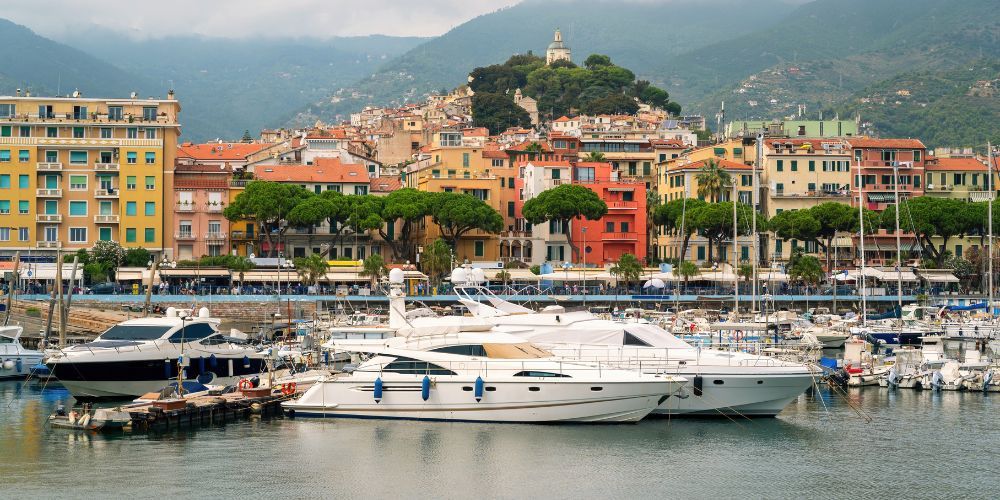
Set in the splendid setting of the City of Flowers and Music, the port of Sanremo is one of the most picturesque harbours in the whole of Liguria and certainly among the most popular tourist ports in italy.
Portosole has over 800 berths and is one of the largest tourist marinas in the whole Mediterranean basin. In Sanremo, you can see boats up to 90 metres long, luxury charters and high-profile private yachts.
Many VIPs come to Sanremo on their luxury yachts, especially during the summer and the Sanremo Festival week. In the marina area, you will find everything you need for your boating holiday: ship chandler, assistance with onboard electronics, nautical upholstery and specialised boat laundry.
1. Tourist ports in Italy: Old Port of Trieste
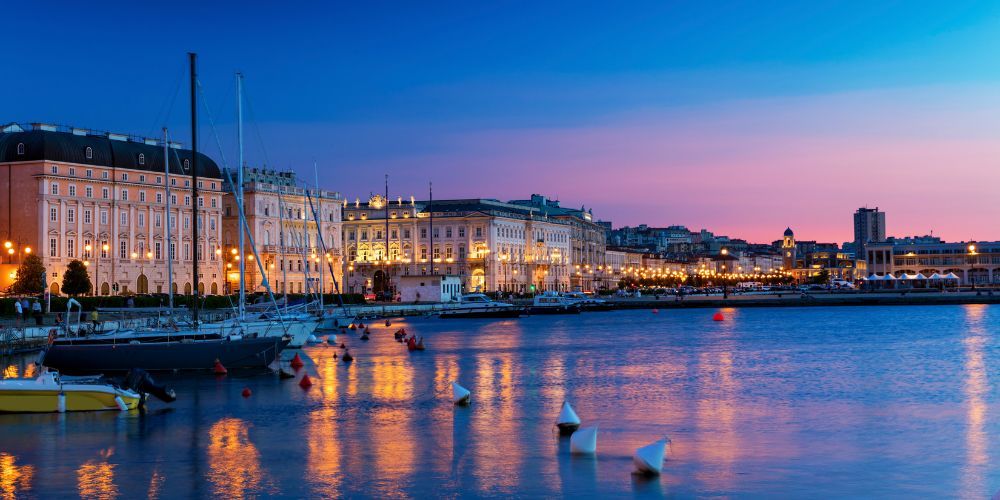
Trieste's Porto Vecchio (Old Harbour) is a fascinating port architecture from the Italian industrial era. It was built in the 13th century but was only enlarged in 1869 when the Suez Canal was opened. What makes the Old Port of Trieste unique is its difference from all the other marinas in the Mediterranean: the construction and organisation of its buildings are based on the model of Northern European cities where the port area of the city was built according to the circulation of goods. In particular, it recalls the Hamburg's Speicherstadt.
In the Porto Vecchio of Trieste, you can still admire the five original piers, the breakwater of 1875, the hydrodynamic power station (a unique structure in the world, still equipped with all the original machinery), the electric station, the warehouses, and the original construction patents. You will still find the remains of the picturesque grass-roofed harbour inn and the old hangars. You can park directly on the nearby streets and discover the wonders of this industrial-era gem exploring on foot the beautiful city of Trieste, a city of sea, wind, coffee, and writers.
You can park right in the streets adjacent to the Port and discover the wonders of this relic of the industrial age exploring on foot the beautiful city of Trieste, capital of science 2020, city of sea, wind, coffee and writers.
Here ends our fascinating journey exploring the best tourist ports in Italy. What was your favorite?
About the author
Written on 28/11/2023

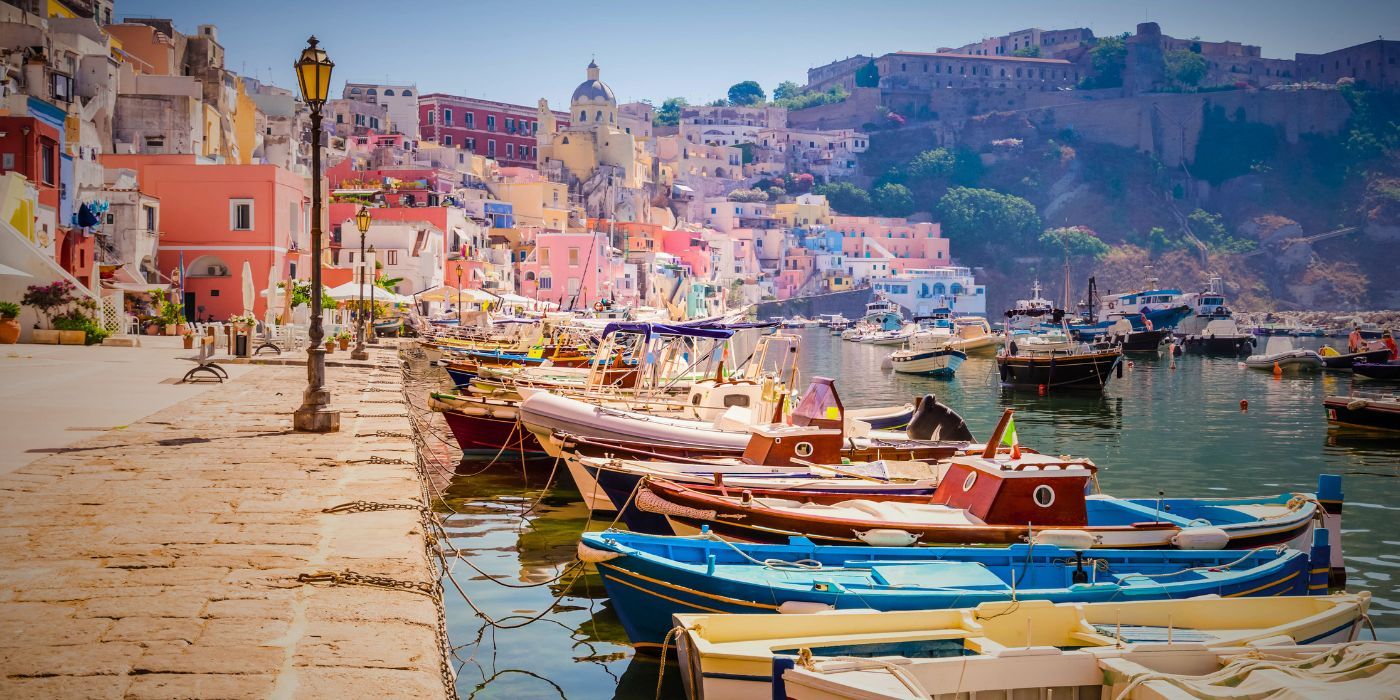

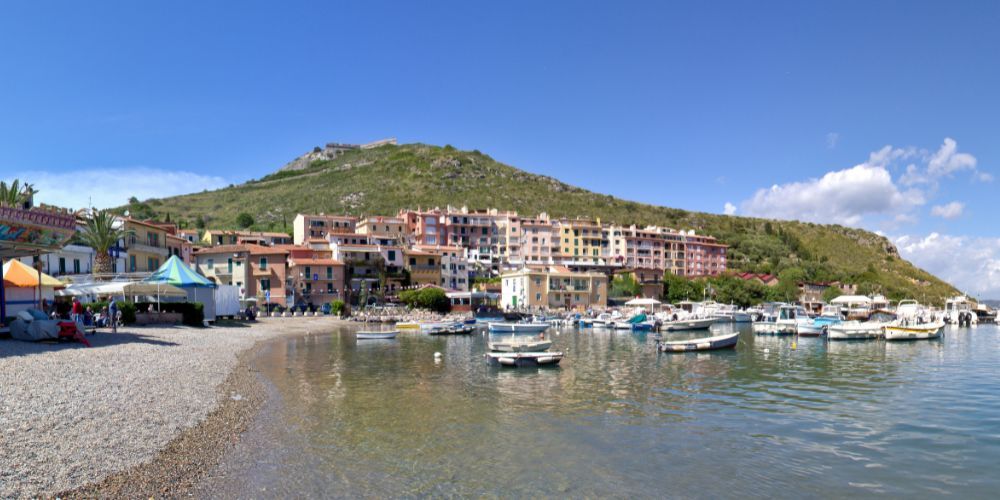

Gloria Venturini
Find out with us the 10 best tourist ports in Italy, unique seaside locations close to artistic and natural beauties to discover on your boat trip.